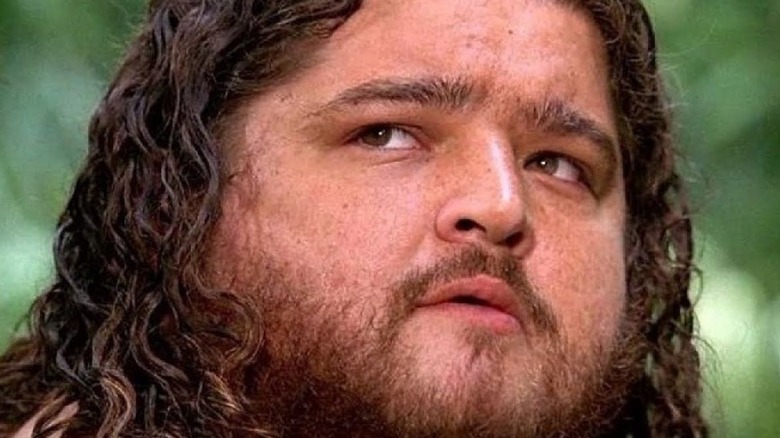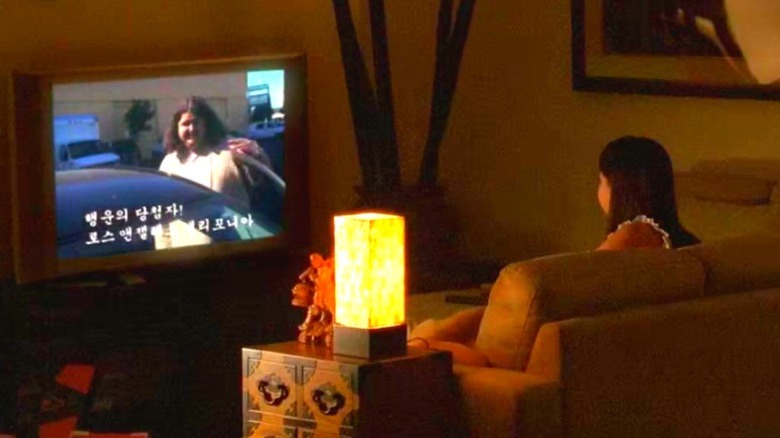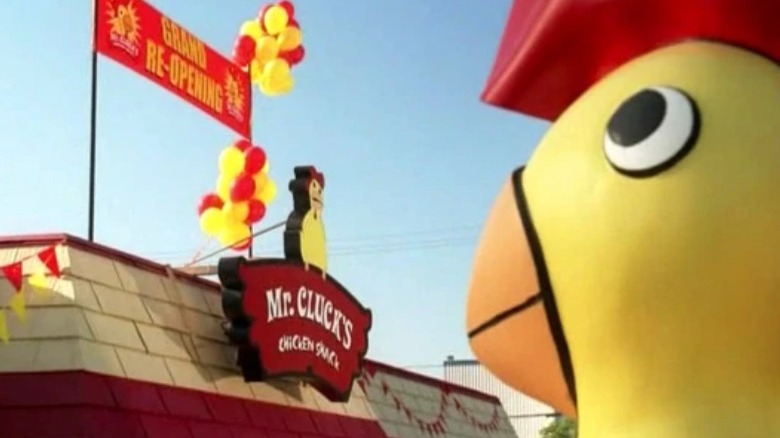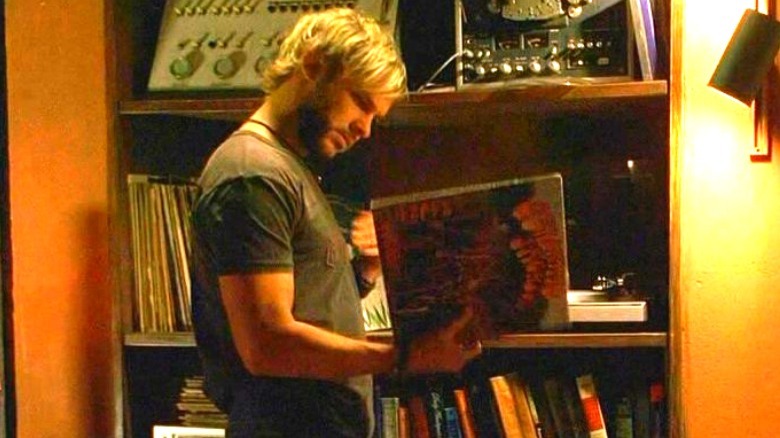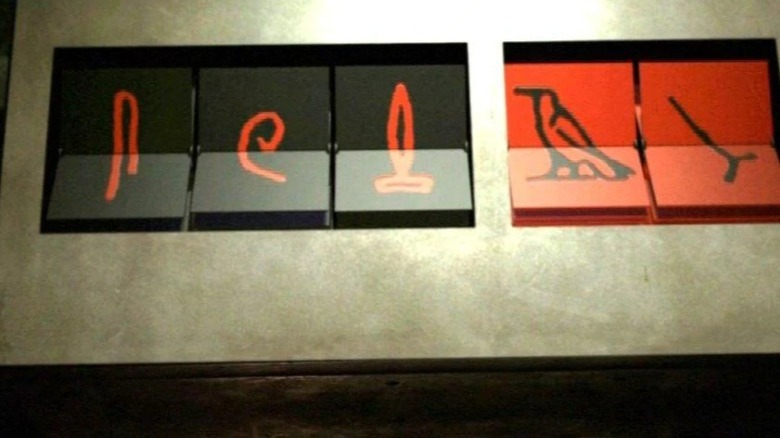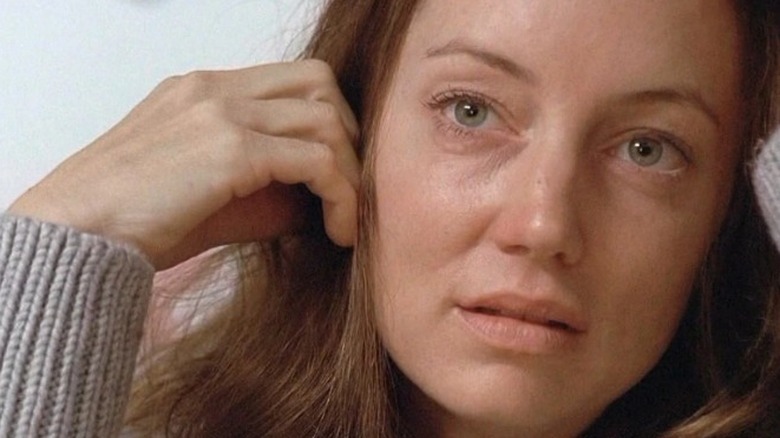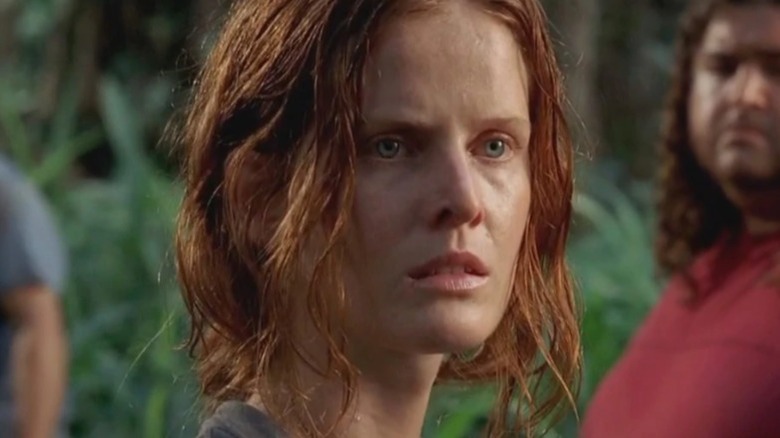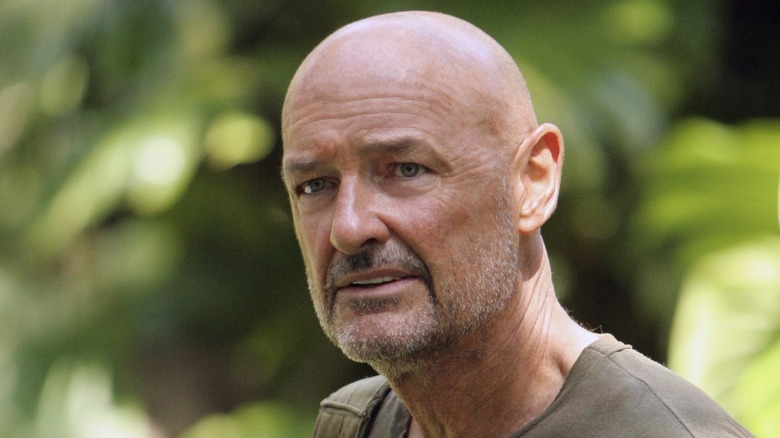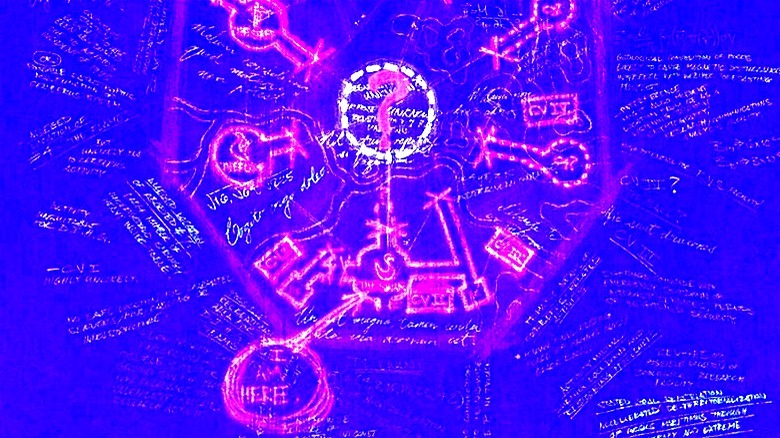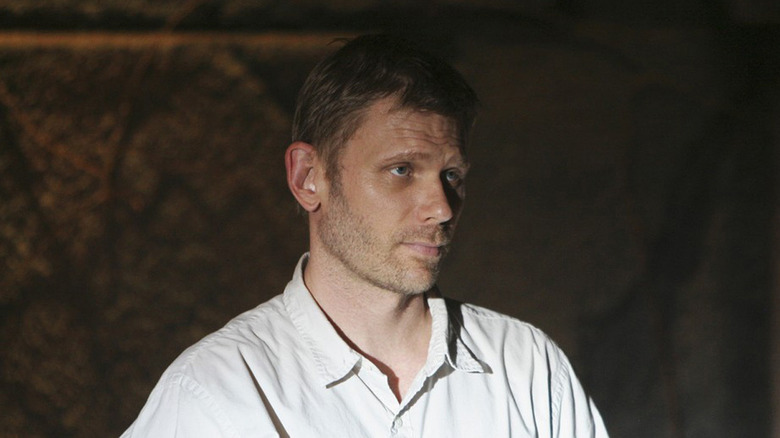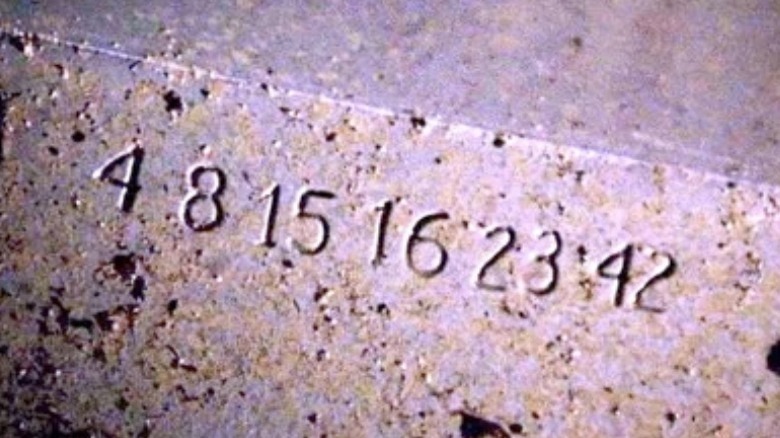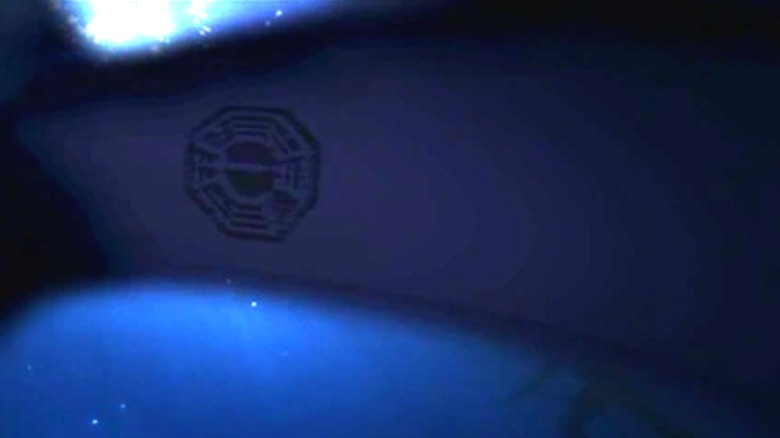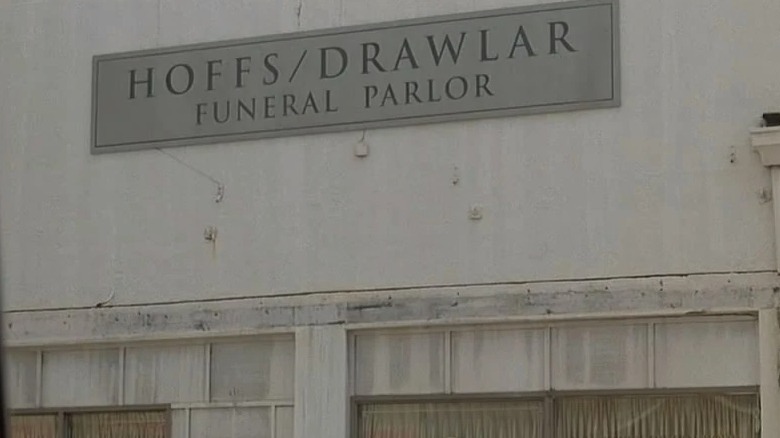Things You Only Notice In Lost After Watching It More Than Once
When "Lost" first premiered with its central cast of dozens and its innovative mix of drama, mystery, science fiction, and the supernatural, there was nothing else like it on television. What seemed at first like a series about a group of survivors struggling to stay alive after a plane crash rapidly derailed into a wild tale filled with polar bears, powerful corporate entities, spiritual disease, and even a smoke monster. Viewers tuned in week after week throughout the show's run as the seemingly endless stack of mysteries and unexpected moments in "Lost" piled up, making it one of the great water cooler shows of the 2000s.
Even though we now know how things turn out for the passengers of Oceanic Flight 815, that magical island is still filled with new secrets to uncover on repeat viewings. Step into the hatch, because we're diving into details you only notice in "Lost" after watching it more than once.
The passengers' lives all intersected before the island
Central to the many puzzles, mysteries, and miracles of "Lost" is the idea that the island drew the survivors to it as part of the search for a new custodian. As told through various flashbacks, the lives of these "candidates" pull them into each other's periphery even before their time on the island. The extent of this becomes apparent on a rewatch, as characters who once blended into the background are more familiar. And with each new viewing, it becomes increasingly clear how intricately the passengers' lives intersected with one another.
Many of the passengers had the opportunity to meet each other before even setting foot on Flight 815, and their interactions often pushed them unwittingly toward the island. A few years before 815 crashes, during Desmond's fateful coffee shop meeting with Libby, she gifts him the sailboat that leaves him stranded on the island. Not long after, he talks with Jack as they are both running stairs at a stadium in Los Angeles ("Live Together, Die Alone, Part 1"). And then there are the indirect connections, like how Hurley's future love interest Libby is also a patient in the Santa Rosa Mental Institute where he first learns the numbers ("Dave"). From Sawyer's stop at a diner where Kate's mom works to all Eko and Claire's run-ins with psychic Richard Malkin, there are so many examples of these that there's an entire page devoted to character connections on the Lostpedia wiki.
The same fictional companies keep showing up
TV and film producers often incorporate fictional products and companies into their storytelling. One of the most prominent examples is the Morley cigarette company, which Insider reports has been around since the 1960s when Morleys showed up in "The Twilight Zone" and "Psycho." And then there are more iconic examples like Los Pollos Hermanos from "Breaking Bad," or the Weyland-Yutani Corporation from the "Alien" saga.
In the world of "Lost," fictional companies and products serve as reminded that the passengers' lives are inextricably enmeshed, as the characters become involved with the same companies over and over. Paik Heavy Industries, the company owned by Sun's father, does business with the Widmore Corporation ("There's No Place Like Home, Part 2") and is connected to the Hanso Foundation, according to the ARG "The Lost Experience." Mr. Cluck's Chicken Shack, where Hurley once worked, sponsors the real Henry Gale's hot air balloon and advertises at a soccer match Desmond watches ("Flashes Before Your Eyes").
When Hurley's financial advisor mentions buying a box store in Tustin, this presumably refers to the one Locke works at ("Walkabout," "Numbers"). Hurley's old boss from Mr. Cluck's even worked there later, where he terrorized Locke just as he once did Hugo ("Tricia Tanaka is Dead," "Walkabout"). And a teenage John Locke turned down Richard Alpert's offer to attend a science camp sponsored by Mittelos Laboratories, the same company Juliet would later be recruited to work for ("Cabin Fever").
Drive Shaft isn't the show's only fictional band
A central element of guitarist Charlie Pace's back story in "Lost" is his experience playing in the one-hit-wonder band Drive Shaft, which found sudden success with their radio hit "(You All) Everybody" before a hard decline due to partying, drugs, in-fighting, and generally selling out. In addition to the marketable pop hooks of Drive Shaft, "Lost" fans can find another in-world musical group peppered throughout the story. And like everything else surrounding Flight 815, they pop up again and again.
The band in question is the 1970s group Geronimo Jackson, which first starts showing up in Season 2. According to "The Official LOST Podcast," the band is an obscure one with only a single album. Still, they must have had some fans among the Dharma Initiative community, because the band's Wonderland-inspired poster pops up in their cafeteria ("He's Our You") and on Dharma nurse Rosie's shirt ("LaFleur"). There are extensive references to the group throughout the series, and according to a Wired article about Geronimo Jones, a lot of thought went into creating the Grateful Dead-inspired band. Their music was performed by the real San Diego band The Donkeys.
The writers were making it up as they went
For "Lost" fans who loved untangling the show's clues and diving deep into fan theories, it seemed like a given that all the pieces were put in place intentionally. Unfortunately for many, the ending of "Lost" didn't live up to the promise of a series that seems so detailed and cleverly mapped out. With each successive viewing, the idea that everything in "Lost" means something important starts to unravel, affecting everything from the Others' plan for Walt to the mysterious sickness and the mechanics of the Smoke Monster.
According to veteran TV writer Nick Santora's shocking claims on a 2014 Nerdist podcast, this is because the "Lost" writers were basically winging it. Santora, who said he was friends with one of the writers during the show's run, claimed he asked his pal how they planned to pay off the show's many crazy storylines. His friend's response? "We literally just think of the weirdest most f**** up thing and write it and we're never going to pay it off." In a 2020 interview with Collider, "Lost" writer Damon Lindelhof admitted that the writers struggled with paying off the show's mysteries, lamenting, "I think that we can both agree that we did not get that balance right," but also cited the 2007 Writers' Guild strike and network pressures as contributors to the problem.
A lot of loose ends are never tied up
The number of "Lost" storylines that get dropped or left unfinished becomes clearer with each rewatch of. Some of the show's finer points come into focus a little more clearly with every viewing, but these typically just open the door to more questions. A critical viewer can find dozens of examples of dropped plot points, red herrings, and potential retcons, leaving the details to be filled in by fan theorists.
A perfect example of this can be found in Libby, who left many fans feeling cheated after she was unceremoniously killed off by Michael in the middle of a date with Hurley. First appearing with the tail section survivors, Libby states that she became a clinical psychologist after dropping out of med school ("The Other 48 Days"). But between flashbacks of her time in Santa Rosa and the knowledge that she gifted her boat to Desmond, viewers are left with a lot of unanswered questions about Libby's life and motivations. These have sparked wild speculations, including the theory that she's actually an Other, or that she had secret connections to Charles Widmore. So many of the show's loose ends remain open at the end of its six seasons that the Internet is lousy with compilation lists of them.
Many of the characters' names are literary allusions
"Lost" is dense with literary references from the beginning. Books are hidden throughout the series, and there's plenty of literary imagery, such as Walt's dog being a thematic stand-in for Lewis Carroll's white rabbit and the presence of wild boar being a reference to "Lord of the Flies." Like the sci-fi author names of "The 100" characters Clarke, Wells, and Octavia, or Alfred Bester in "Babylon 5," the names of "Lost" characters also often hold literary significance. In a 2010 interview with The Los Angeles Times, David Lindelof emphasized the thoughtfulness of the show's allusions, explaining that the writers "talk about what the thematic implications of picking a certain book are, why we're using it in the scene and what we want the audience to deduce from that choice."
Take the character of Charlotte Staples Lewis, who spends most of her life looking for a way back to the island after living there as a child. Her name is a reference to "The Chronicles of Narnia" author C. S. Lewis. Much like Charlotte's journey, Lewis' classic fantasy series features a family of children who travel via secret portals into a magical land no one else knows exists. Independently-minded love interest Kate Austen's name is likely a reference to "Pride and Prejudice" author Jane Austen. And like Penny Widmore, the Greek literary figure Penelope spends years waiting for her lost love Odysseus as he sails around performing mythical heroics during "The Odyssey."
Some characters are named for philosophers and scientists
As a series that explicitly explores the intersection of faith and science, "Lost" delves into disparate perspectives on both, with various characters often representing different schools of philosophical or scientific thought. Several of the main characters take their names directly from philosophers whose ideas line up with their own motivations. One of the most obvious examples is John Locke, named for the Enlightenment philosopher who helped pioneer the idea that governments should be held accountable to a social contract. Locke later takes the alias "Jeremy Bentham," who helped develop the moral philosophy construct of utilitarianism. Other philosopher references found in the show include Desmond David Hume, named for Scottish philosopher David Hume, and Danielle Rousseau, named for Jean-Jacques Rousseau, a French philosopher whose writings helped precipitate the French revolution.
"Lost" also pays tribute to a handful of famous scientists, including spacetime theorist Hermann Minkowski via communications officer George Minkowski, who interacts with the time traveler Hume. Two other famous physicists are referenced in the series through professor Daniel Faraday (Michael Faraday) and his mother Eloise Hawking, whose name is an allusion to famed physicist and science communicator Stephen Hawking.
The blast doors contain a lot of clues
When John Locke has the misfortune to get caught underneath the blast door during the Swan station lockdown, he quite literally sees the place in a new light. The hatch's blacklights come on, revealing a fairly detailed map painted in blacklight-responsive chemicals like laundry detergent ("Lockdown"). Originally painted by the Dharma Initiative's Swan station stewards Kelvin Inman and Stuart Radzinsky, the map contains their findings about the island's geography along with various symbols and notations.
For viewers who love to dig deep into the show's mythology and take close looks at every little detail, rewatching the blast door scenes in "Lost" can yield some pretty interesting results. The map's primary features are the Dharma Initiative stations. Although the map clearly shows six, with four of them named, two uncertain notations on the map are later revealed to also be Dharma stations. Notes on the map appear in English, Latin, and Greek, and the map also features what appear to be mathematical notations. The fandom wasted no time delving into the map's hidden meaning, with everyone from Entertainment Weekly to independent YouTubers speculating about the blast door's larger implications.
The Others cremate remains for a reason
Understanding the Others in "Lost" and their elusive motivations remains one of the show's more enduring mysteries. From their cult-like hierarchy to their bizarre use of stage makeup and a decoy village, it can be difficult to take anything they say or do at face value. So when the Others' unique funeral rites are shown in "The Cost of Living," it's easy to dismiss them as just another odd aspect of Other culture.
After Other Colleen Pickett is shot to death by Sun, Ben drags Jack out to attend her traditional Other funeral where all of her compatriots are dressed in white tunics and matching pants. Colleen's funeral takes place at night as the Others place her body, wrapped in a white shroud, on a raft and set it on fire as they push it out to sea. Upon rewatching, a few clever fans realized the practice is rooted in a very practical need to remove the deceased from Old Smokey's playing field. Since the Smoke Monster has the ability to inhabit the dead after encountering their bodies, burning their dearly departed is the best way to keep them from being used by the villain.
The numbers are everywhere
One of the more interesting elements of "Lost" is the recurring pattern of numbers that keep popping up all over the island and in the lives of the survivors. After Hurley first learns the numbers while residing at the mental institution, he uses them to win the lottery and later concludes they're cursed, setting him on a path that ultimately leads him to the island. The numbers are later seen on the outside of the Swan station hatch and used as an input code for the station's computer ("Dead Is Dead," "Man of Science, Man of Faith").
It's later revealed that these numbers correspond to the final candidates for the island as they appear in Jacob's list ("Lighthouse"). But how pervasively these numbers appear throughout the series becomes more apparent with each subsequent viewing of "Lost." Before he reaches the island, Locke spends four years in a wheelchair ("Walkabout"). At one point, Hurley passes a soccer team where each of the girls is wearing a different one of the candidates' numbers ("Exodus, Part 2"). There's the vial Claire is injected with in "Maternity Leave," Kate's safety deposit box ("Whatever the Case May Be"), Faraday's device setting ("The Constant"), and even the mileage on Hurley's car ("There's No Place Like Home, Part 1").
There's a shark with a Dharma symbol
Before meeting their demise at the hands of a very young Ben Linus, the group of science-minded hippies known as the Dharma Initiative is all over the island conducting various experiments pertaining to its electromagnetic properties. And one thing the Dharma Initiative just can't get enough of is slapping its logo all over the island. Inspired by Taoist symbology, these octagonal logos include the main Dharma symbol and more specific variants, including different logos for each research station. These logos show up everywhere -– on their jumpsuits, manuals, vehicles, computer screens, medical kits, playing cards, film canisters, wine bottles, and even on their food ("Enter 77," The Man Behind the Curtain," "Lockdown").
Given this, the fact that the Dharma folks took the effort to stamp their logo on their experiment animals isn't too surprising, and it's worth looking for on a rewatch of the series. In a Betamax video tucked away within the series epilogue "New Man in Charge," Dr. Pierre Chang reveals the station's purpose is to conduct research on "various animal, bird, and marine subjects," including, apparently, a shark. The shark in question, dubbed Ezra James Sharkington by the show's creators in the May 11, 2007 episode of "The Official LOST Podcast," appears in all his toothy glory in both the Season 2 episode "Adrift" and the Season 6 flash-sideways "LA X, Part 1."
The show drops secret hints
Besides the hidden numbers and name meanings in "Lost," viewers can find plenty of other clues lurking throughout the series. Over the years since the show's original run, fans have combed the world of "Lost" for anagrams and found more than a few of them. The fact that Ethan Rom, the interloper who abducts Claire, was an Other is hidden right there in his name, which rearranges to spell "Other man." The name of the Hoffs/Drawlar Funeral Parlor where Jack goes to see John Locke's body in "Through the Looking Glass, Part 2" is an anagram for "flash forward." Canton-Rainier, the name on the van that transports Locke's body, is an anagram for "reincarnation." And according to "The Official LOST Podcast," Mittelos is an anagram for "lost time."
Eagle-eyed viewers can also notice visual clues hiding in the background of some episodes. When Desmond falls from a ladder while jumping through time and space, a pan of "Future" brand paint can be seen ("Time"). Viewers can also find polar bears hidden throughout the series, from the plush polar bears in the Drive Shaft commercial crib and Santa Rosa Mental Institute to the bears hidden in Charles Widmore's painting and Walt's comic book ("Fire + Water," "Dave," "Flashes Before Your Eyes," "Exodus, Part 2"). Of course, in shows like "Lost," these little details are a big part of the fun.
